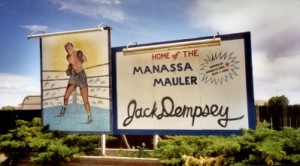Review by Lynda La Rocca
Grand Canyon – May 2005 – Colorado Central Magazine
Side Canyons
by Laurie Wagner Buyer
Published in 2004 by Five Star Publishing
ISBN 1-59414-115-0
SIDE CANYONS is billed as a fictionalized account of one woman’s life-affirming adventure on the Colorado River through the Grand Canyon.
Readers familiar with author Laurie Wagner Buyer’s poetry (see the June, 1999 issue of Colorado Central for my review of her collection, Red Colt Canyon) already know that Buyer the poet is a sure, confident observer of both the natural world and the struggling, searching souls who inhabit it.
In Side Canyons, Buyer, who lives in Woodland Park, is again at her best when describing her surroundings–from the canyon’s “rosy cake rock with creamy frosting, brownie crust on top of the cliffs, the shades pink icing mottled like marble,” to the foaming, churning river rapids that morph into quiet, jade-hued pools visited by dragonflies and great blue herons.
Here the author waxes eloquent over the journey of some driftwood washed ashore by the river and about to be used as kindling:
“Each branch believed it was lost in the river’s rushing water. Each was remade a creation shaped by water and wind, sand and sun, and forgot that it was once a tree. Each washed up on the white beach to bleach away its wet darkness, until human hands found it and turned it into fire.”
What’s not to like, right? Unfortunately, for me at least, what I don’t like is the sense that this book isn’t quite sure what it wants to be when it grows up. It reads like a memoir and indeed, Buyer writes in an “Author’s Note” that it “is based on journal notes taken during my raft trip on the Colorado River.” Coincidentally, the narrator’s name is also Laurie. And the book’s Laurie also has a ranching background similar to the author’s.
Yet Buyer further writes that Side Canyons “… must be considered a work of fiction because of the artistic license invoked to re-create events.” A separate disclaimer in the front of the book informs readers that, “Names, characters, places and events are either the product of the author’s imagination, or if real, used fictitiously.”
Why not simply say something like, “This is a memoir of my trip through the Grand Canyon. All names have been changed to protect the innocent,” and let it go at that?
A woman with such a clear, powerful voice who generally writes so well might better serve both herself and her fans by choosing one genre and sticking with it. And perhaps if Buyer had written Side Canyons as a memoir, she could have filled it with fully realized characters instead of one-dimensional stick figures who spout sentiments like, “Your laid-back manner softens me, opens my mind and allows the Canyon full access.”
As it is, Side Canyons doesn’t seem like a novel because there’s no character development–even narrator Laurie, the book’s most complete “person,” is portrayed superficially–and there’s no plot other than the river-running trip itself. The only bit of dramatic tension comes near the end of the book when Lana, one of Laurie’s four original companions, gives Laurie a tongue-lashing. But this, too, has no real context; the reader doesn’t know enough about the characters’ personalities and motivations to understand the basis of their misunderstanding–or to care about it, or them.
Thus this book doesn’t really work as a novel, but it isn’t a memoir, either, because Buyer won’t let it be. So what is Side Canyons?
For one thing, it’s a fine collection of poetry about the canyon, the river, the landscape and longing evoked by life in the West, and the intricate dance between men and women that, with patience, acceptance, and a little luck, sometimes results in enduring love.
Instead of chapters, the prose in Side Canyons’ 250-plus pages is divided by more than 50 poems, enough to make a complete collection. These poems primarily reflect upon or complement the narrator’s experiences in the canyon or on the river, or capture a memory or perception generated by those experiences.
As usual, I’m intrigued by Buyer’s poetry. And I appreciate her references to other outstanding poets, among them Colorado’s James Tipton and David Lee, Utah’s first poet laureate.
Also as usual, nothing escapes Buyer’s keen poet’s eye. After a canyon hike in which her narrator comes across a live bat impaled on a cactus spine by a loggerhead shrike, Buyer pens a tribute to another hapless creature, a dead coyote pup whose “carcass melts back into the earth.”
One morning, while eating an orange at the river camp, she recalls having once prepared a dish of oranges and coconut for her husband, who has remained at the ranch while his wife spends nine days on the river:
“While the wind raged, we sat in front of the fire
eating ambrosia; for days after, snowbound,
I smelled oranges in the air, tasted oranges on his lips.”
Later, after catching her reflection in a pebbly river pool, Buyer writes:
“She blinks her eyes and sees who she once was.
Blinks again and sees clearly the woman she is.
Once more, and she’s startled at who she’ll become.”
I would recommend this work for its poetry and the stunning descriptions of the river, the Grand Canyon, and the furry, four-footed, flying, creeping and crawling creatures that dwell there. Just don’t expect to encounter any human characters that you’d like to get to know better.

